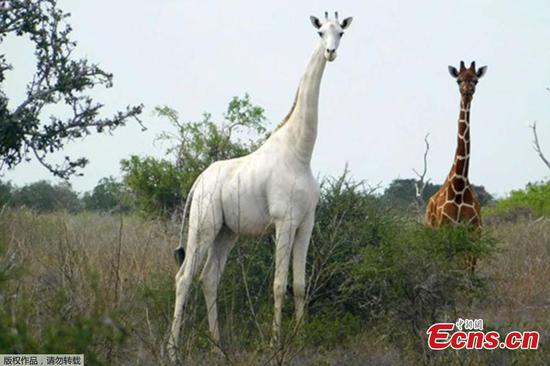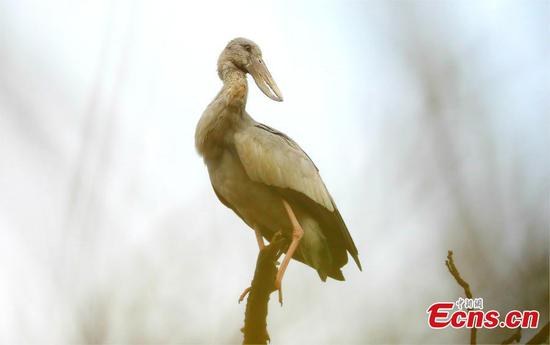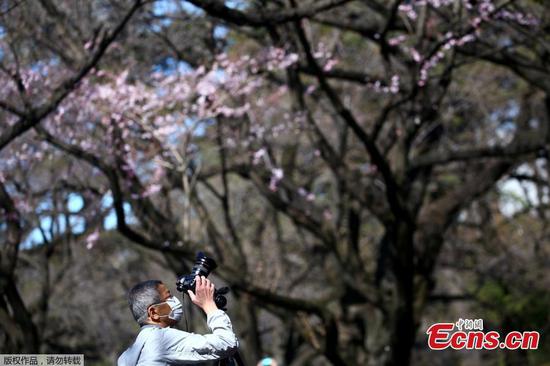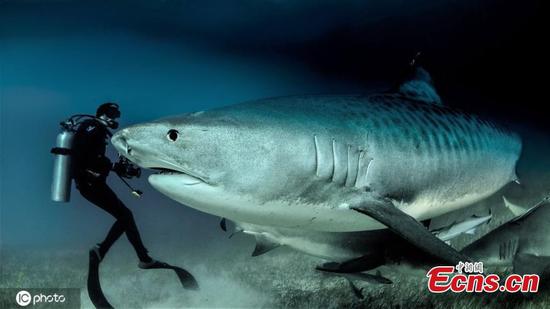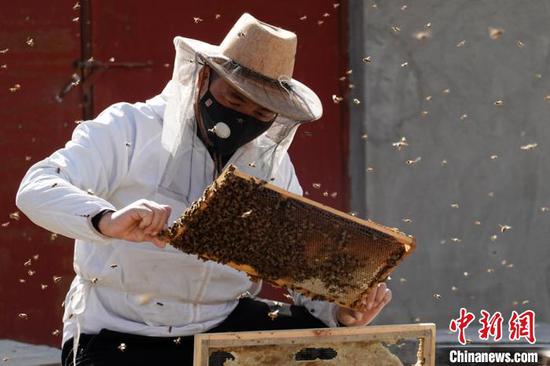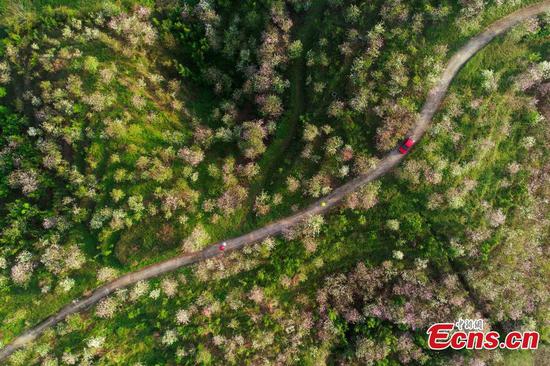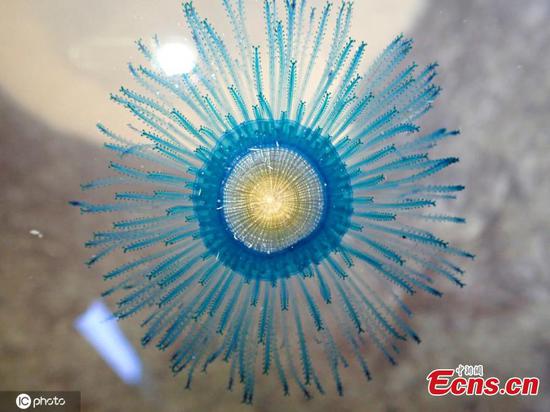An international team of scientists recently discovered the skull of a tiny bird preserved in 100 million-year-old Myanmar amber dating to the Cretaceous period, according to a paper newly published in renowned scientific journal Nature.
The 14-millimeter-long skull is smaller than that of a bee hummingbird, the smallest living bird, making the new species, Oculudentavis khaungraae, the smallest bird – and thus dinosaur – ever found.
When Xing Lida, a paleontologist at the China University of Geosciences, who led the research, first saw the amber in 2016, he was amazed.
"It's awesome. It's like a tiny arrow with a long beak and big eyes. Too strange. Only birds have such characteristics," he said.
"But it had too many teeth, much more than the common early Cretaceous birds," he said.

A bird-like dinosaur is clearly seen in the amber in which paleontologists found the new species, Oculudentaviskhaungraae, the smallest dinosaur of all time. (Photo provided to chinadaily.com.cn)
The well-preserved fossil skull has rows of nearly 100 teeth that extend all the way under its big eyes that are supported by scleral rings (eye bones) of a unique structure. The unusually high number of teeth and the unique shape of the eye make it difficult for paleontologists to classify the specimen, nicknamed Teenie Weenie.
Scientists speculate that about 100 million years ago this bird-like animal lived in the tropical humid Hukawng Valley in northern Myanmar, where the amber was mined, and was unfortunately trapped by globs of resin that dropped from trees, leaving it exquisitely preserved in the amber through millions of years.
The most interesting thing about the specimen is its unusually small size, Xing said.
Paleontologists note that animals that become very small have to deal with new problems, like how to adjust all sensory organs in a very small head or how to maintain body heat. They call this process miniaturization, which commonly occurs in isolated environments like islands. During miniaturization, animals normally have lost teeth and enlarged eyes.

Image reconstruction of the living environment of Oculudentavis khaungraaeshows it in the Hukawng Valley in northern Myanmar 100 million years ago. (Photo provided to chinadaily.com.cn)
Despite its small size, the specimen, Oculudentavis, has more teeth than any other fossilized bird. Its tooth row is also longer than that of other birds, extending all the way under the eye. The large number of teeth indicates that Oculudentaviswas a predator, the paper said.
"Judging from its size, it might prey mainly on insects," Xing said.
Another odd thing is its eye, which is 4 mm in diameter. Birds are known to have a ring of bones that help support the eye. In most birds, the bones in the ring are simple and fairly square, but in Oculudentavisthey are spoon-shaped, a morphology previously found only in some living lizards, which is one of the most confusing features paleontologists find in this specimen, the paper said.
The eye bones would have formed a cone, like those in owls, suggesting keen visual abilities. However, unlike owls, whose eyes face forward, Oculudentavis's eyes would have faced sideways, the paper said. The jugal, or cheekbone, is bowed in such a way that suggests Oculudentavis's eyes would have bulged out of its head sideways.









